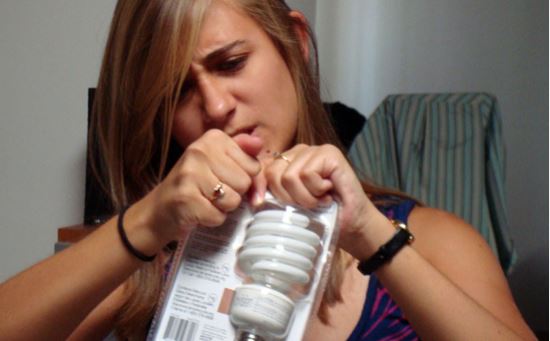The Real Reason Why Amazon is Packaging Up Profits
It’s that time of the year again. Every holiday shopping season, the “retail apocalypse” discussion moves front and center.
In reality, it’s not so much an apocalypse as it is a rethinking of the way we shop. Online is definitely growing. Physical storefronts are hit-and-miss.
Forget all that. I want you to think about packaging.
If you do, you will see a gigantic opportunity that most other investors are missing.
Recently, Jeff Bezos, the founder of Amazon (AMZN) sat down for a wide-ranging interview with Michael Beckerman, the CEO of the Internet Association. That’s a trade group that bills itself as the “unified voice of the internet economy.”
In this interview, Bezos shared the principles behind how Amazon dominates its markets. These principles have organically inspired many of the company’s winning products, services and programs.
Bezos presented highlights of these success stories. And one of these achievements attracted my attention as an investor. But first, here’s how Amazon fosters excellence.
- Become obsessed with customers. Not products. Not technology. Not your competitors. Amazon always puts customers first. The company strives to know its customers so well that it can invent what they want before they even know they want it.
- Focus on long-term planning. Too many companies focus on the bottom line from year-to-year or quarter-to-quarter. At Amazon, they plan five to seven years ahead.
- Identify your big ideas. This will help your company focus on what’s important. You should only have two or three big ideas. But they should reflect values that will hold up for 10 to 20 years. Amazon has three big ideas: low prices, fast delivery and vast selection.
- Accept failure as a path to success. You can’t invent or pioneer without making experiments, says Bezos. And by their nature, experiments fail more often than they succeed.
I believe investors should pay close attention to one of Amazon’s experiments … because it offers a big key to the company’s success.
Consider this: You can’t shop anywhere without confronting clear plastic, clamshell packages. They’re used by most toy- and consumer electronics-makers. And consumers hate them. During the interview, Bezos described them as indestructible and frustrating. He has a point.
Merchants turned to clamshells in the 1980s to combat shoplifting. Without a sharp knife, it’s almost impossible to free the product. And the packaging is too bulky to hide under clothing.
Plus, there are other advantages. Clamshell packages look good on display. Customers can see the entire product through the clear plastic.
The downfall is that clamshells are very expensive, bulky to ship and hard to recycle. And yes, consumers hate them.
They’re also dangerous.
In 2006, the U.S. Consumer Product Safety Commission estimated that clamshell packages led to 6,000 emergency-room visits.
You see, it’s impossible for customers to open clamshells with their bare hands. So, they use dangerous tools like scissors, knives, box cutters, razor blades and combat knives.

And, bad things happen when frustrated people hack and slash at the plastic packages. The list of injuries ranged from severe cuts to severed tendons and injured eyes.
Bezos says Amazon.com has been working on a program called Frustration Free Packaging for the past 10 years. To put that in perspective, the only older programs are Prime, its membership service, and Amazon Web Services, the web-hosting behemoth.
For Amazon, packaging is a very big deal.
The reasons should be obvious. Shoplifting and product displays don’t matter to the online giant. Its products get housed in giant warehouses all over the world. Pieces get scanned and counted.
That bulky clamshell packaging hurts Amazon in two important ways. It costs more to get products because there are fewer pieces per wholesale crate. And it requires larger boxes to send items to retail customers.
Amazon has made progress by working with vendors to create internet-friendly packaging. Easy to open. Easy to dispose of. Today 80,000 products are available under FFP. And in the past year alone, Amazon has saved 55 tons of waste.
This is an important trend in the packaging industry. As retail moves more online, there is a huge economic incentive to change the way products are packaged. Investors need to understand this trend, because a new ecosystem is evolving. Winners are being created right now.
One of the companies I have been watching for my members was founded in 1940. And, it has become one of the leading corrugated packaging companies in the world.
It makes simple, brown cardboard boxes that are both easy to open and just the right size for online shipping. Since 2010, shareholders have seen the stock rise 398%.
And, by all accounts, the best is yet to come.
In 2016 it shipped 6.7 billion metric meters of corrugated cardboard, and 2.4 million tons of paper packaging. It currently operates in 30 countries, and it is continuing to expand its footprint to meet robust demand for simplified online packaging.
Margins are expanding. Cash flow is strong.
And there are other winners. One company makes the robotic machines used to make box production more efficient. Another makes sensors. Another makes software.
This is a rapidly growing sector that very few investors even know exist. Packaging is the new black. And just like that universally flattering color, profits look good on everyone — especially you. Here’s how to get in on that trend.
Best wishes,
Jon Markman



